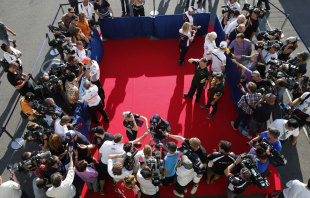

Towards the end of the year there was an interesting piece of news from the Middle East that could herald a new development for F1 broadcasting.
Media company MP & Silva bought the F1 rights for the Middle East and North Africa, in a six-year deal that sees them paying for the rights which they will then sell on to local broadcasters. Similar deals have been done by MP & Silva for F1 rights in Poland, Romania, and Bulgaria, Reuters reported.
Having the rights owner be more middle-man than broadcaster is an interesting prospect. The current F1 model sees broadcasters investing not only in the rights themselves, but also in the development of their coverage. Many countries have broadcasters who send sizeable teams to every race, while some make do with commentating on the feed from a studio at home, saving money.
The MP & Silva model will allow their customers to decide just how much money to throw at the sport - do they run straight coverage of sessions and little else, or do they pepper weekends with mini features and interviews and added extras?
By not having to fork out for the regional rights themselves, but only an individual deal with MP & Silva, the broadcasters will have a degree of flexibility in their spending not currently available to big spenders like Sky who paid a lot for their rights and must pay more to create the sort of coverage that encourages satellite subscriptions.
The MP & Silva deals have been done in territories that are largely untapped markets for Formula One, countries with pockets of growing interest in the sport, but none of the legacy found in countries like the UK, Italy, and Germany which prompts heavy investment from cash-strapped broadcasters. And it's unlikely that we will see the model used in F1 strongholds in the near future - in addition to long-term contracts currently in place, there is simply too much money to be made from individual deals in territories where F1 is an established valuable televisual commodity.
It's a shame. By doing regional deals in place of national ones, broadcasters sharing the rights could offer Formula One at a reduced cost while delivering the same level of coverage they do at present. That could lead to a reduction in subscription costs, or - best case scenario - a viable return to the free-to-air model.
Since F1 went subscription only in a number of its key markets, viewing figures have dropped. It's not hard to understand the connection. By being more flexible in its rights deals, and applying the MP & Silva model to established territories, Formula One could once more widen its reach and grow a new generation of fans to keep the sport's coffers full long into the future.
